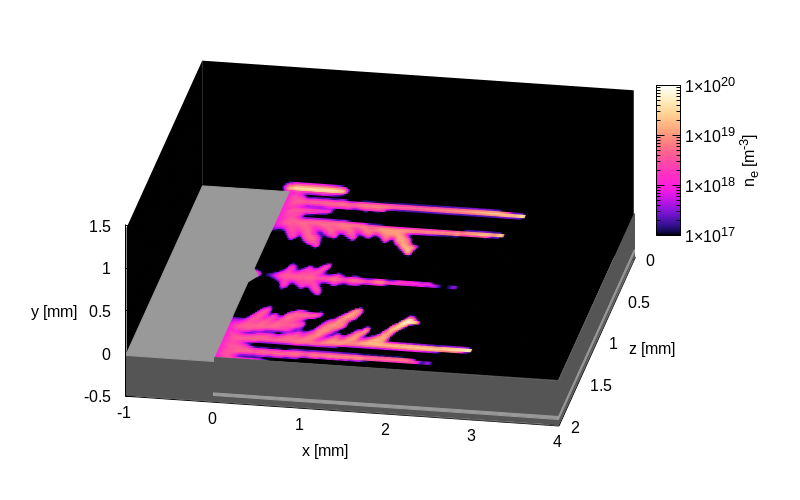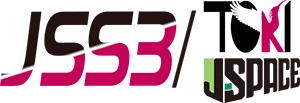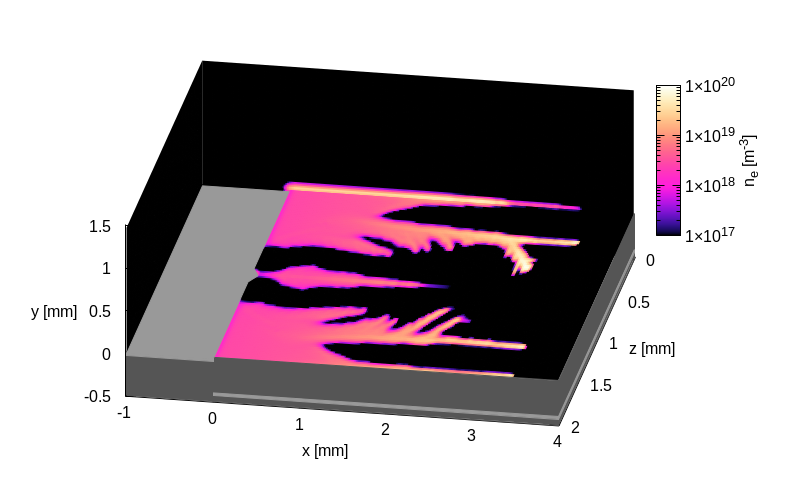Three-dimensional numerical simulation of discharge and flow related to airflow control using plasma actuator
JAXA Supercomputer System Annual Report February 2024-January 2025
Report Number: R24EACA16
Subject Category: JSS Inter-University Research
- Responsible Representative: Naofumi Ohnishi, Professor, Tohoku University
- Contact Information: Naofumi Ohnishi(naohnishi@tohoku.ac.jp)
- Members: Rei Maeta, Naofumi Ohnishi, Shintaro Sato
Abstract
Plasma actuator has attracted attention as a fluid control device using dielectric barrier discharge. In the experimental study, it has been pointed out that the discharge has a spanwise distribution of the electrode and has a three-dimensional structure. The three-dimensional structure affects the induced flow distribution of the plasma actuator. In this study, we perform the three-dimensional numerical calculation of discharge and flow for verification of airflow control effect of plasma actuator.
Reference URL
N/A
Reasons and benefits of using JAXA Supercomputer System
In the calculation of the discharge phenomenon, it is necessary to solve Poisson's equation at every time step, and it is solved using a convergence calculation, which calculation cost is high. In addition, since three-dimensional calculations are performed in this research, the required memory capacity is so large, and a supercomputer is necessary.
Achievements of the Year
In this year, three-dimensional numerical simulation of the discharge process were performed toward coupling simulation of discharge process and fluid flows controlled by DBD plasma actuators. In order to investigate the discharge process of a plasma actuator under practical conditions, a model simulating the effect of external ultraviolet irradiation is developed and the discharge simulations were performed. The model takes into account the desorbed electron flux from the dielectric surface due to ultraviolet irradiation. It is found that the ultraviolet irradiation model suppresses the branching of the discharge structure in streamer-type discharges. This result suggests that the spanwise inhomogeneity of the discharge, which hinders the improvement of the airflow generation efficiency, can be mitigated in the ultraviolet irradiation environment brought about by the sun. We will investigate the induced flow characteristics of the plasma actuator in a more realistic environment by simultaneously assuming a low-pressure environment at a high altitude in addition to the ultraviolet irradiation as future works.

Fig.1: Electron number density distribution during discharge propagation without UV irradiation model.
Publications
N/A
Usage of JSS
Computational Information
- Process Parallelization Methods: MPI
- Thread Parallelization Methods: N/A
- Number of Processes: 36 - 720
- Elapsed Time per Case: 9 Hour(s)
JSS3 Resources Used
Fraction of Usage in Total Resources*1(%): 0.01
Details
Please refer to System Configuration of JSS3 for the system configuration and major specifications of JSS3.
| System Name | CPU Resources Used(Core x Hours) | Fraction of Usage*2(%) |
|---|---|---|
| TOKI-SORA | 0.00 | 0.00 |
| TOKI-ST | 61912.32 | 0.06 |
| TOKI-GP | 0.00 | 0.00 |
| TOKI-XM | 0.00 | 0.00 |
| TOKI-LM | 0.00 | 0.00 |
| TOKI-TST | 0.00 | 0.00 |
| TOKI-TGP | 0.00 | 0.00 |
| TOKI-TLM | 0.00 | 0.00 |
| File System Name | Storage Assigned(GiB) | Fraction of Usage*2(%) |
|---|---|---|
| /home | 585.00 | 0.39 |
| /data and /data2 | 46930.00 | 0.22 |
| /ssd | 5020.00 | 0.27 |
| Archiver Name | Storage Used(TiB) | Fraction of Usage*2(%) |
|---|---|---|
| J-SPACE | 3.47 | 0.01 |
*1: Fraction of Usage in Total Resources: Weighted average of three resource types (Computing, File System, and Archiver).
*2: Fraction of Usage:Percentage of usage relative to each resource used in one year.
ISV Software Licenses Used
| ISV Software Licenses Used(Hours) | Fraction of Usage*2(%) | |
|---|---|---|
| ISV Software Licenses(Total) | 0.00 | 0.00 |
*2: Fraction of Usage:Percentage of usage relative to each resource used in one year.
JAXA Supercomputer System Annual Report February 2024-January 2025



